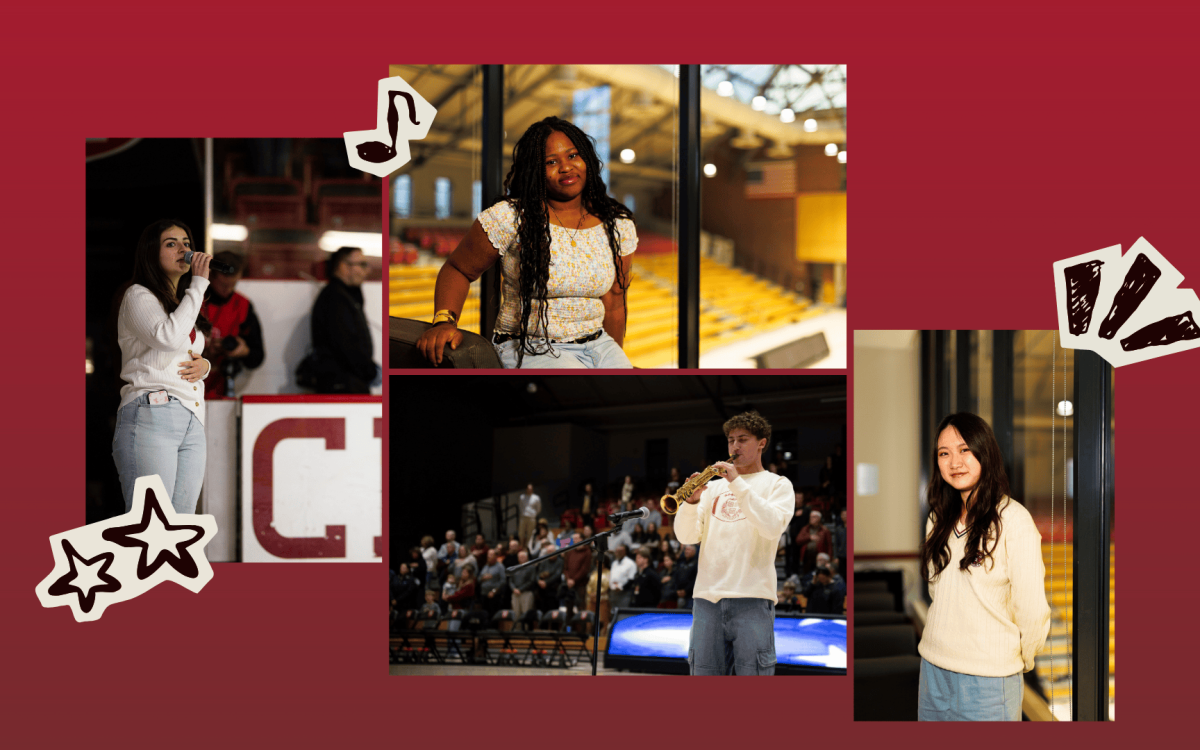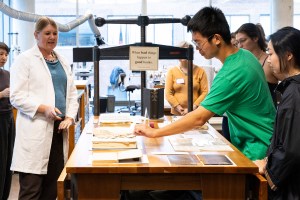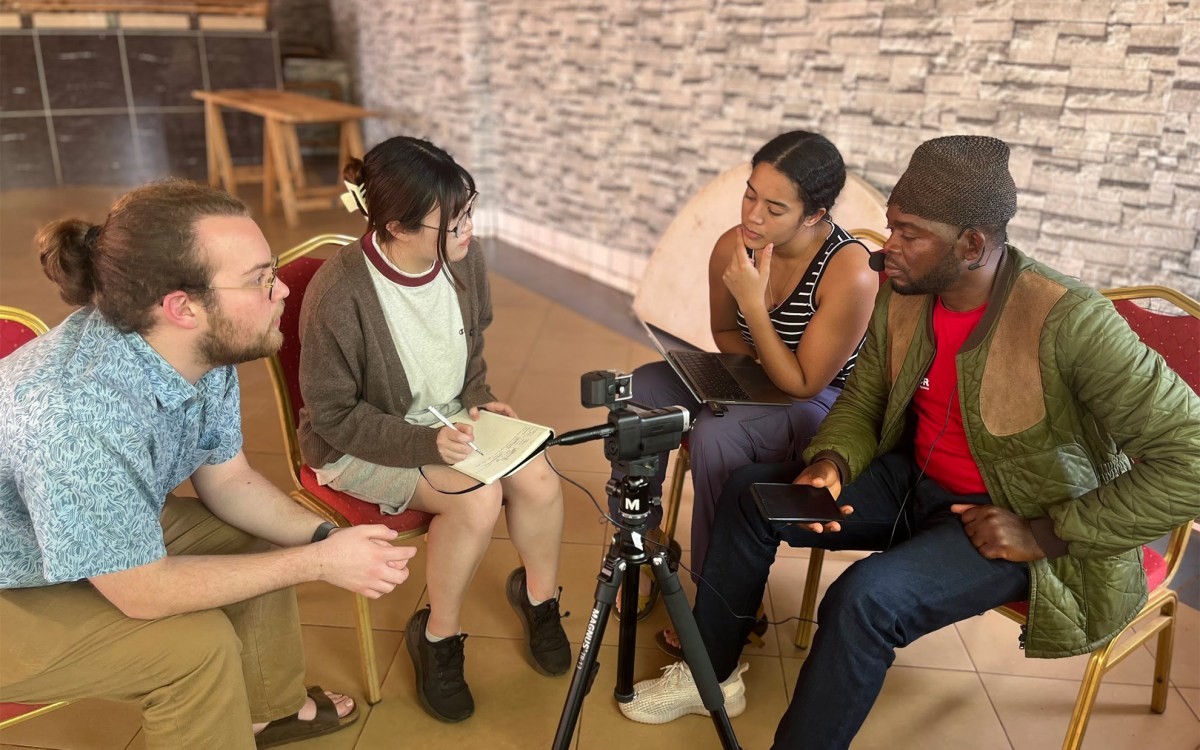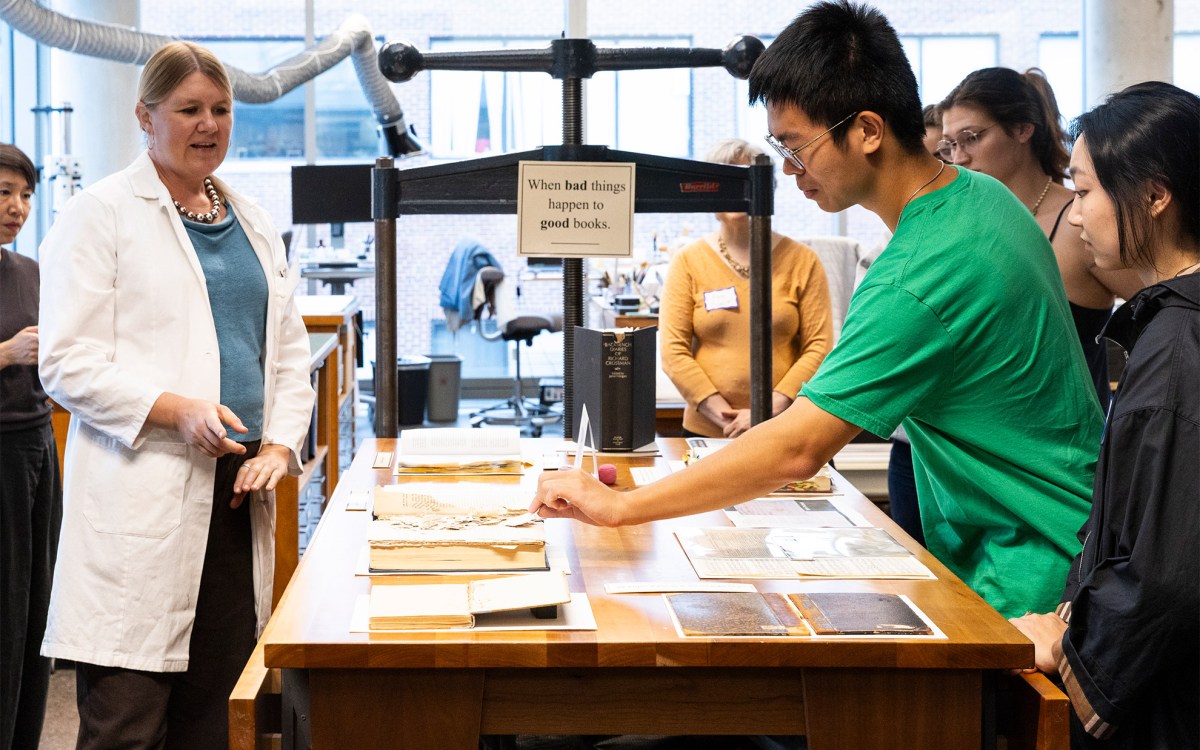The joys and perils of building a superb film archive
From Warner Bros. to ‘Titicut Follies,’ the constant for Guest is excellence
When Bette Davis called in sick during her time as a contract player with Warner Bros., the studio was known to send their own physician to her house to make sure she wasn’t malingering.
Haden Guest mentions this intriguing fact as one of the many insights into the Hollywood studio system he gained while working as curator and acting director of the Warner Bros. Archives at the University of Southern California, the largest and most comprehensive collection of materials from a single Hollywood production company.
“You can learn a great deal in a specialized archival collection,” he said. “In the course of researching one subject, you pick up a lot of knowledge along the way.”
What fascinates him is the way the major studios were able to streamline the creative process to suit the vision of the most influential producers and directors.
“The contract system placed great demands on actors and writers. There was a need to maintain a steady production schedule, and for that, talent had to be readily available. The studios wouldn’t let anyone remain idle.”
Even a writer of William Faulkner’s stature was moved from one project to another with hardly a breathing space in between. Meanwhile, production supervisors kept memos, still preserved in the Warner Bros. Archive, about which actresses showed up with facial blemishes and the types of makeup needed to hide them.
“It’s fascinating to study how films were made during that period. There was enormous attention to detail.”
The Hollywood studio system is, however, only one of Guest’s main scholarly interests. While he would probably be an awesome opponent in a movie trivia contest, his focus reaches far beyond commercial filmmaking, into the realm of nonfiction and experimental cinema. This past September, Guest traveled east to take up his new job as director of the Harvard Film Archive (HFA), an institution very different from the one he left behind in Los Angeles, but one that he has found equally absorbing.
“It’s been an intense learning experience. Harvard and the Boston area in general have had a long history of nonfiction filmmaking. Coming from Los Angeles, I certainly knew of this tradition, but I hadn’t realized what an active and fertile filmmaking center Boston remains to this day.”
Among the best known filmmakers working in the nonfiction tradition with strong ties to Harvard or to the Boston area and whose works are represented in the HFA, Guest first mentions Robert Gardner (“Dead Birds,” “Forest of Bliss”), one of the HFA’s founding fathers and a seminal figure in the Boston film scene.
Other important nonfiction filmmakers who have taught on the faculty of Visual and Environmental Studies (VES) and have helped to train and mentor generations of younger practitioners include: Alfred Guzzeti (“Family Portrait Sittings”), Richard Rogers (“A Midwife’s Tale”), Ross McElwee (“Bright Leaves”), and Robb Moss (“The Same River Twice”).
In addition, Guest points out, there are many well-known nonfiction filmmakers with ties to Harvard and Boston, such as documentarians Frederick Wiseman (“Titicut Follies”), Richard Leacock (“Monterey Pop”), The Maysles brothers (“Grey Gardens”), D.A. Pennebaker (“Dont Look Back”), and Ed Pincus (“Diaries”).
Experimental filmmakers Standish Lawder (“Corridor”), Stan Brakhage (“Dog Star Man”), Hollis Frampton (“Hapax Legomena”), Saul Levine (“Note to Pati”), and animators such as Derek Lamb (“The Psychic Parrot”), Caroline Leaf (“The Street”), and VES Professor Ruth Lingford (“The Old Fools”) are also among those who have lived and worked in and around Boston.
With all this filmmaking activity, along with award-winning film scholarship by VES faculty such as Giuliana Bruno, Eric Rentschler, and D.N. Rodowick, it is little wonder that enthusiasm for film has been growing at Harvard.
“There has been an explosion of interest in film and visual studies by both students and faculty. In the future we expect to establish a Ph.D. program in film studies,” Guest said. His view of the HFA’s role is both to keep pace with that growing interest as well as to stimulate it.
“The collection will continue to grow and to support the study of film on campus. We’re hoping to bring in some exciting new material,” he said.
Guest plans to continue to acquire new examples of documentary and nonfiction film, but also to build the HFA’s collection of art cinema from Europe, Latin America, and Japan. He predicts many surprises as well, in particular the offers that come from private film buffs looking for a home for their collections.
“There’s such an incredible bounty of film collections that have come to our attention.”
But acquisition is only part of the process. Now that the HFA has become part of the Harvard Library system, plans are afoot to comprehensively catalog the entire collection. In the fairly near future the HFA’s more than 10,000 film titles will be available online, making it far easier for students and researchers to access the collection.
“It will be a sea change when the collection is fully cataloged,” Guest said.
In addition, the HFA’s Carpenter Center film series will continue as always, making an enormous variety of documentary, foreign, historical, animated, and avant-garde films available to the general public.
“We will do our best to provide access,” Guest said. “We don’t want a closed-door policy. Our goal is to make the HFA a really strong resource for film study at Harvard.”




